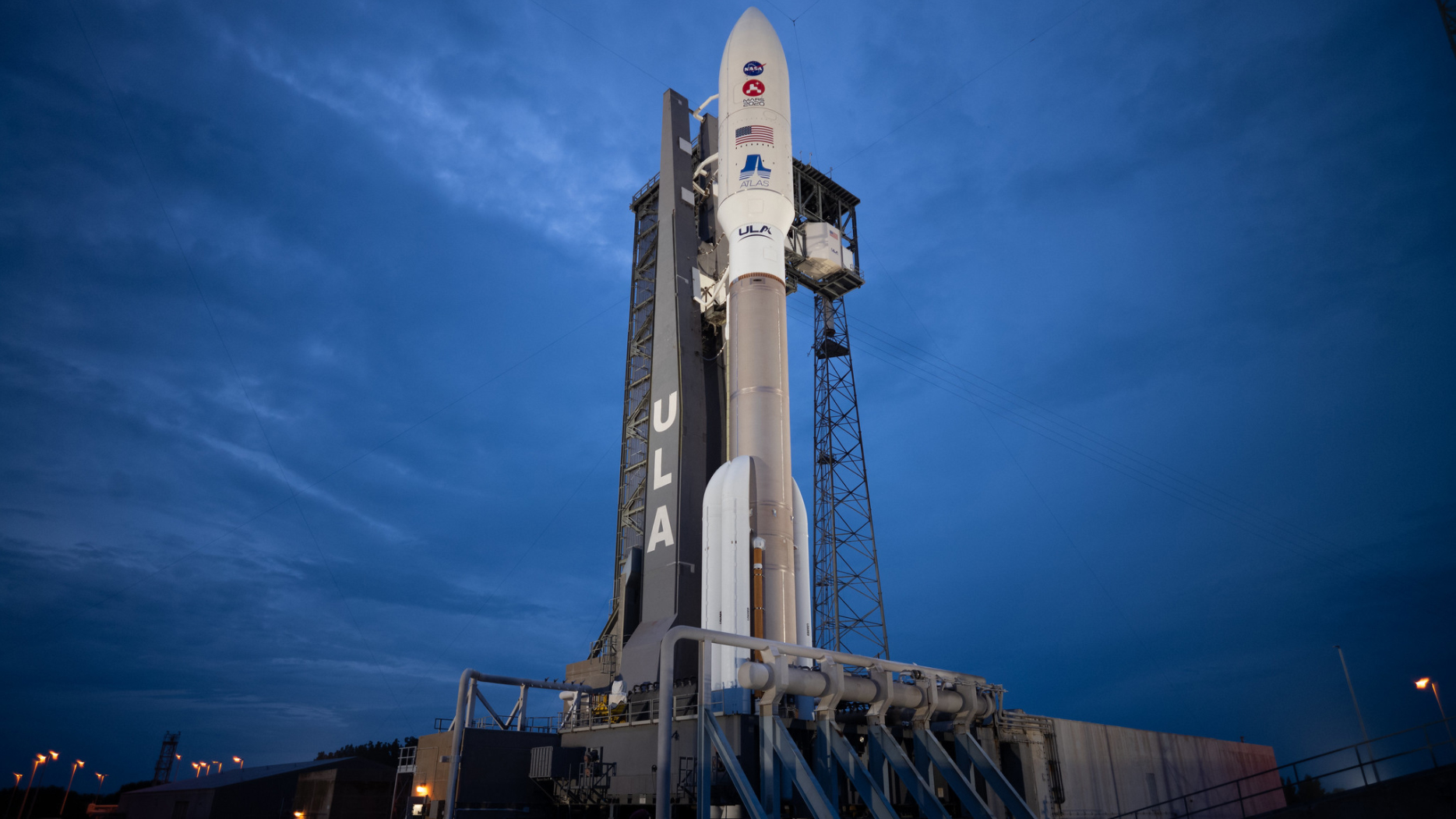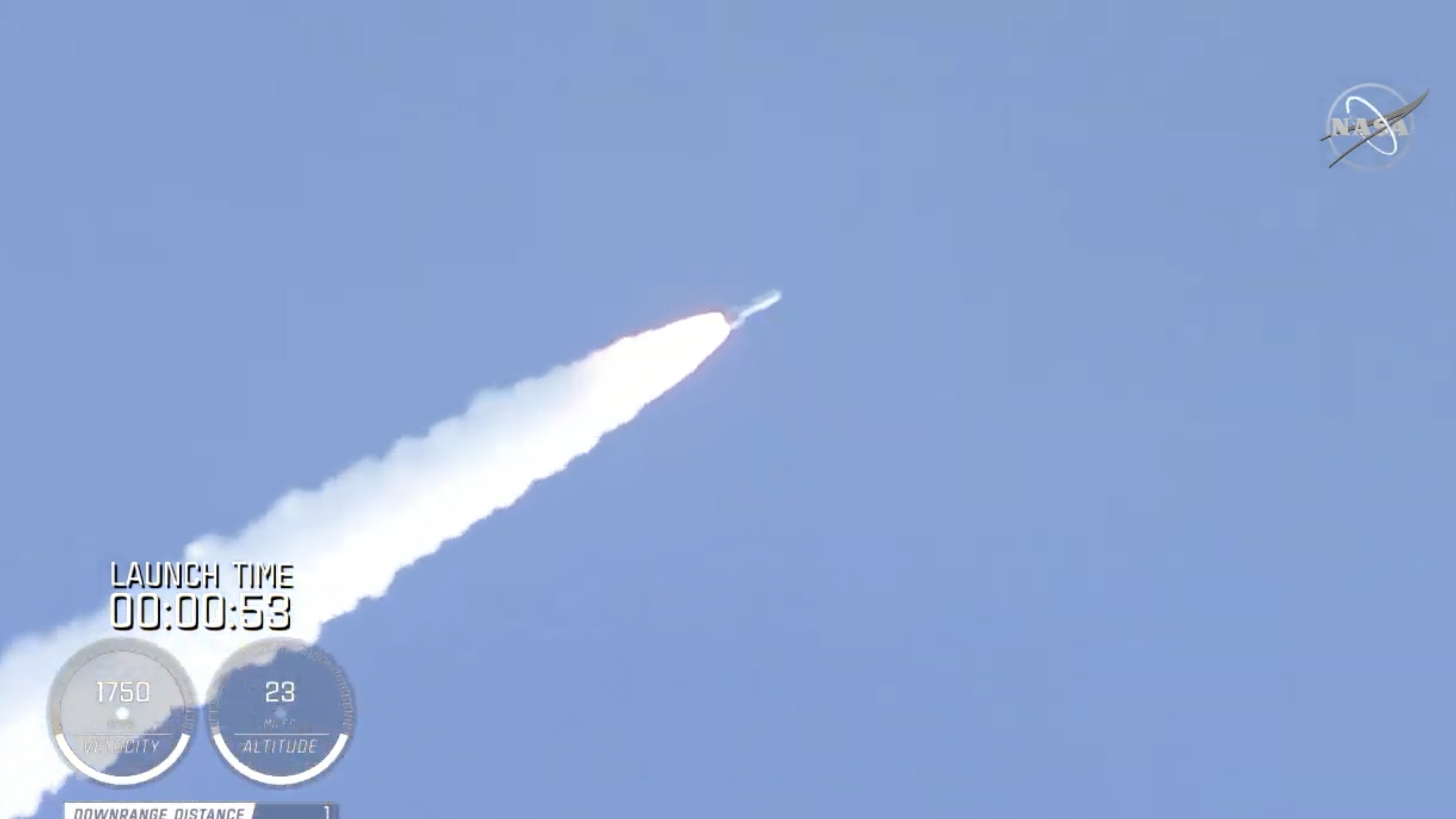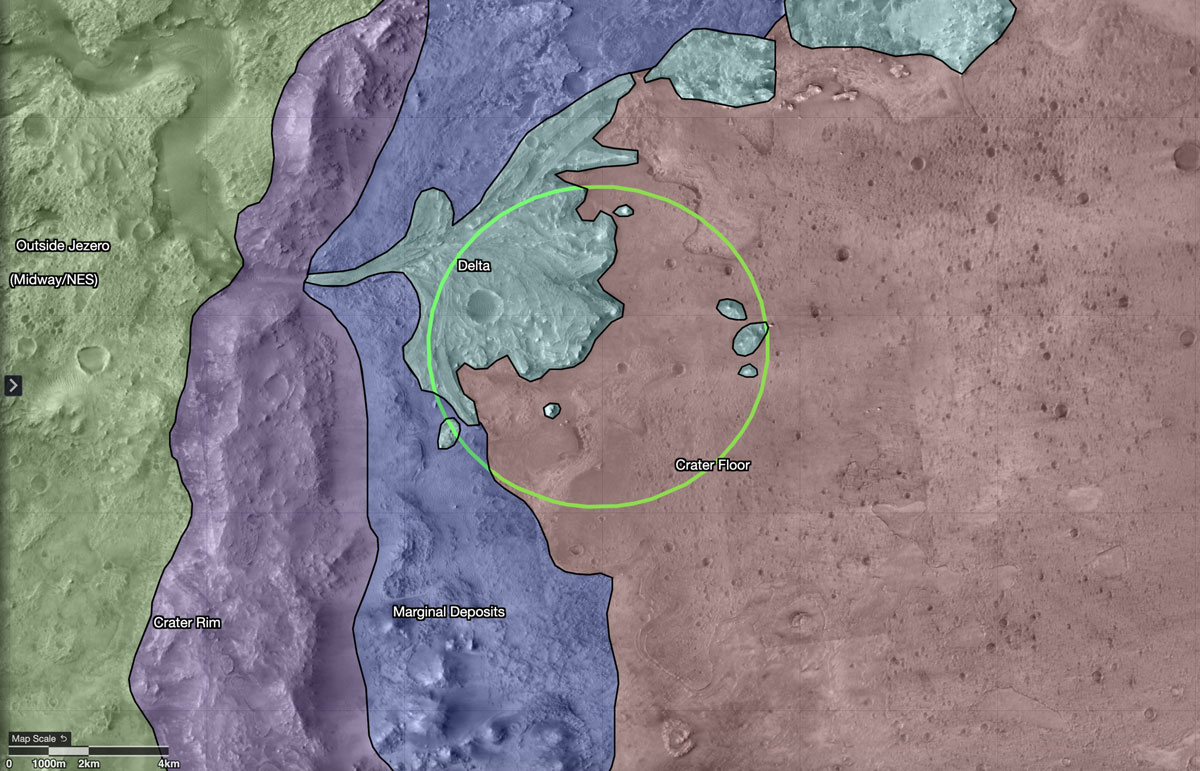Liftoff! NASA's Perseverance rover is headed to Mars

NASA's Mars Perseverance rover left Earth's atmosphere and began the long journey to Mars this morning under clear skies.
The launch went off successfully at 7:50 a.m. EDT (4:50 a.m. PDT), when the rover rode skyward atop Atlas V-541 rocket from Launch Complex 41 at Cape Canaveral Air Force Station. Perseverance will now be in transit until Feb. 18, 2021, when it will land at Jezero crater and begin analyzing Martian geology and climatology.
Part of NASA's Moon to Mars exploration program, Mars Perseverance is exploring a region of the Red Planet that periodically hosted water during the ancient past. The rover will drill soil and sediment samples and cache them for a future return to Earth. It will also conduct geological analyses and climate monitoring, with an eye toward figuring out how to keep astronauts alive in the harsh Martian environment. Jezero crater's temperatures can drop to minus 130 degrees Fahrenheit (minus 90 degrees Celsius) at night. Mars is also bombarded by solar radiation, which can cause radiation poisoning and cancer, and is beset by large dust storms, such as the enormous storm that did in the Mars Opportunity rover in 2018.
Related: The 7 most Mars-like places on Earth
🚀 We have LIFTOFF to Mars! The @ulalaunch Atlas V takes flight with our @NASAPersevere rover. The #CountdownToMars continues as Perseverance begins her 7-month journey to the Red Planet! pic.twitter.com/3RTL1CR4WSJuly 30, 2020
Perseverance is carrying samples of spacesuit fabric that NASA engineers hope will help humans withstand this perilous environment. The Moon to Mars exploration timeline has NASA putting a man and woman on the moon by 2024 in preparation for sending humans to Mars. To do so, they'll need next-generation spacesuits that can shield the astronauts inside from radiation and keep them at a comfortable temperature. The rover is carrying a sample of polycarbonate helmet visor material, teflon and coated teflon.
It is also carrying a sample of ortho-fabric, a combination of Gore-Tex, Kevlar and the fireproof fabric Nomex. Ortho-fabric is already used on the outside of spacesuits. Finally, engineers will be testing Vectran, a cut-resistant fabric used on spacesuit gloves. The goal is to test the strength of these materials over time as they're exposed to the Martian environment.







Sometime this spring, Perseverance will attempt a first by releasing another payload: the Mars Ingenuity helicopter. This mini-drone is the first helicopter that anyone will ever attempt to fly on another planet. It sports four carbon-fiber blades that rotate at 2,400 rpm in order to provide lift in the thin Martian air. NASA scientists hope they can successfully fly the helicopter to open up new avenues for interplanetary exploration.
Get the world’s most fascinating discoveries delivered straight to your inbox.
Perseverance is also equipped with special equipment that can do science at a distance. It sports cameras that can enable scientists to study Martian mineralogy and geochemistry without ever seeing a sample in person, and several spectrometers that can reveal what chemical elements are present in a sample. The rover's sensors can measure temperature, wind speed, humidity, pressure, and dust size and shape.
The rover also carries the Mars Oxygen In-Situ Resource Utilization Experiment, or MOXIE, a technology designed to produce oxygen from the Mars' atmosphere, which is 95% carbon dioxide. This oxygen could then be used to burn rocket fuel, allowing future astronauts on Mars to launch themselves back to Earth.
Originally published on Live Science.

Stephanie Pappas is a contributing writer for Live Science, covering topics ranging from geoscience to archaeology to the human brain and behavior. She was previously a senior writer for Live Science but is now a freelancer based in Denver, Colorado, and regularly contributes to Scientific American and The Monitor, the monthly magazine of the American Psychological Association. Stephanie received a bachelor's degree in psychology from the University of South Carolina and a graduate certificate in science communication from the University of California, Santa Cruz.


